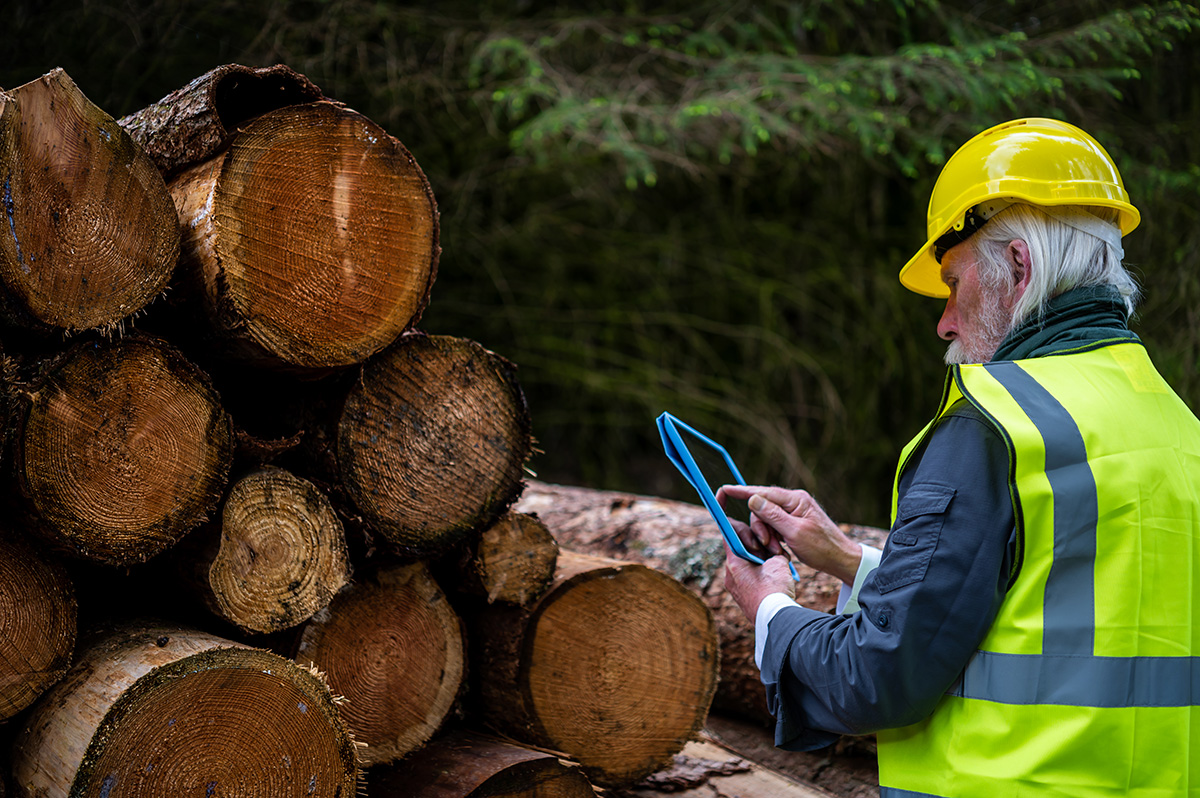Stretching across the globe, the lumber industry exists in almost every country and continent. With that in mind, there are some very interesting lumber facts that apply to the industry in individual regions and around the world.
Today, we’ll be digging into some of the industry’s most interesting lumber facts. Some of which, might surprise you!
1. Word-Wide Lumber Employment
According to World Bank, a global charity organization, the timber industry employs roughly 13.2 million people globally. To put this in perspective, there are 13 million people who live in the State of Pennsylvania.
What’s even more interesting about that statistic is that the number of people only encompasses those formally employed in the timber industry across the globe. World Bank doesn’t factor in jobs for lumber suppliers, manufacturers, or even craftsmen. With all of those different professions combined, lumber probably provides tens of millions more jobs across the globe.
2. Lumber Industry Estimated Value
In 2021, the estimated global worth of the lumber industry as a whole was $631.11 BILLION (with a “B”!). Over the coming years, the lumber industry is expected to grow exponentially. With continued sustainable lumber harvesting and management, the lumber industry has the potential to continue to be one of the world’s largest industries!
3. Lumber Harvesting Prevents Forest Fires
Forest fires have created a lot of problems in the western United States over the last couple of years. One proven solution is currently being considered by legislators across western states such as California and Oregon – responsible logging.
Unlike controlled burns that can be potentially devastating, logging is a much more controlled process. Looking at other places in the US where the lumber industry is thriving could prove potentially beneficial.
4. The Lumber Industry Has Increased Our Understanding of Timber Harvesting Practices
In the 20th century, deforestation had become quite the problem for the lumber industry. Although ecologists and arborists had shown that timber populations could be sustainably harvested, the lumber industry was challenged by creating an industry-wide model of sustainable lumber harvesting methods.
In 2022, the lumber industry in the US doesn’t have to worry about decreasing wood populations any more. By planting and harvesting in large-scale cycles, there’s a sustainable and healthy population of lumber for years to come.
5. Pharmaceuticals and Lumber Go Hand-in-Hand
Ever taken an Aspirin? Aside from the scientist who created Aspirin, you can thank the Willow tree for that medicinal staple. Scientists found that the bark of the Willow tree had certain anti-inflammatory properties. With further experimentation, that little pill called Aspirin was developed in the early 1900s.
6. The Lumber Industry Has a Low-Energy Cost
According to the North American Forest Foundation, the American lumber industry consumes only 4% of the total energy used in raw materials manufacturing. For how large the lumber industry is, this is an incredible feat!
Over the last few years, energy consumption has become a hot-button topic. Luckily, the lumber industry is in a favorable position for energy consumption.
7. Lumber is Biodegradeable
Lumber, without extensive chemical treatment, biodegrades relatively quickly. In 1-6 months, a wooden board can fully biodegrade depending on the moisture content in its environment. A large criticism of wood packaging is that it inevitably ends up in landfills.
Not only are these pallets in the minority, but even if they end up in landfills, they disappear back into the ground within a year if the lumber isn’t treated. Making lumber a sustainable material for packaging and more.
8. Wood Products are POPULAR
In the United States, wood products make up 47% of all raw materials used in the manufacturing industry. This includes lumber products such as raw lumber, treated lumber, wood dunnage, pallets, crates, and more! All that being said, lumber is quite a popular product.
9. Timber Increases Property Values
While lumber is undeniably valuable as a building material, it’s also valuable in its living form as well! By adding trees to your property, experts believe it could increase your property value by an average of 7%.
10. The Lumber Industry Gives More Than it Takes
Starting in the mid-twentieth century, lumber professionals across the US began to realize the need for forest recovery. Now, roughly 70 years later, the US lumber industry currently plants more trees than it harvests, and a large part of the industry avoids taking lumber from old-growth forests altogether.
We Hope You’ve Enjoyed Learning These Lumber Facts
If you’ve made it this far, we hope you’ve learned something new about the lumber industry! With such an enormous impact on the global economy and individual regions alike, there never seems to be a lack of lumber knowledge to learn, analyze, and share with other lumber professionals.



![[PRESS RELEASE] Conner Industries Announces Major Guardian Packaging Expansion](https://conner.b-cdn.net/wp-content/uploads/2024/10/Guardian-Packaging-Expansion-500x383.jpg)
![[PRESS RELEASE] Conner Industries Announces Website Dedicated to Integrated Packaging Division](https://conner.b-cdn.net/wp-content/uploads/2024/05/Conner-Packaging-Blog-500x383.jpg)


